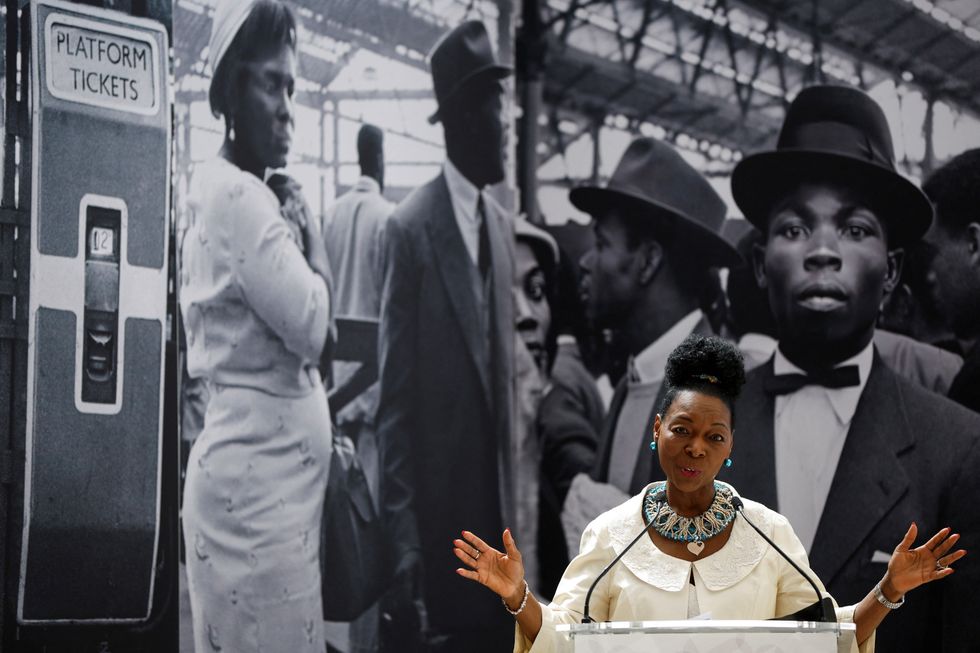WITH shops reopening and fashion retail therapy back on the agenda for many, now is a good time to check what impact our wardrobe habits are having on bigger issues of sustainability and climate change. Don’t get me wrong, I am not here to preach and certainly not an expert on climate change. But overhearing thought-provoking conversations about the importance of mindful fashion between my daughter and her friends inspired me to write this.
According to consumer research, attitudes towards fashion are eye-opening with almost a third admitting to throwing clothes away when they’re bored of them, not when they’re worn out. And often, many are unaware of the growing issue of clothing waste in the UK and the devastating impact on the environment.
A whopping 350,000 tonnes of clothing is thrown away yearly. That’s almost 3.5 tonnes of clothing every five minutes. And on average, an item of clothing is worn 10 times before disposal. The fashion industry accounts for up to 10 per cent of global emissions due to an endless demand for natural resources and complicated supply chains.
But what can you do to lower your carbon footprint? To help clear the air, we need to prioritise fashion that uses renewable energy and existing materials. Simple changes like switching to plant-based leather alternatives or when you buy new clothes finding ones made from recycled materials could reduce the carbon footprint by up to 80 per cent. Even choosing pre-owned or used fashion can counteract up to 22kg of carbon dioxide – shockingly, this is the amount a tree consumes in a year.
Interestingly, less than 1 per cent of our planet’s water is suitable to drink. The fashion industry exacerbates this issue by using crops and processes which can pollute waterways. An easy way to cut down your water usage is to wash smarter not harder. Essentially, wash your clothes less, clean small stains by hand and wash on a gentle cycle of 30 degrees. You can even freshen your jeans or other clothes between washes by simply hanging them outside or leaving them in your freezer (yes you read that right).
Recycling is also a huge problem in fashion, with only 1 per cent of textiles fed back into the production of new clothing. Recycling fashion aims to reduce this waste and allow materials to live longer. Many manufacturers have increased their consumption of recycled materials. Some have developed bio-based materials that include everything from pineapple leaves to fruit peels.
To increase the longevity of your clothes, it’s not a big secret that taking good care of them will help. Again, only washing them as and when needed on a gentle cycle or sewing them when broken and donating when no longer needed can make a difference. And someone is likely to give your old, cherished clothes a new home.
Moving forward, perhaps before buying something new, before throwing away those unloved
jeans or that unworn dress or sari at the back of your wardrobe, use a little imagination. What’s seen as old is an opportunity to recreate and re-wear super stylish new outfits. It’s a challenge we can all rise to.
And this gives real hope for a better future, one that we can all contribute to with small actions.
Follow Mita Mistry on www.twitter.com/mitamistry or visit www.mitamistry.co.uk






 LONDON, ENGLAND - JUNE 22: Baroness Floella Benjamin speaks during the unveiling of the National Windrush Monument at Waterloo Station on June 22, 2022 in London, England. The photograph in the background is by Howard Grey. (Photo by John Sibley - WPA Pool/Getty Images)
LONDON, ENGLAND - JUNE 22: Baroness Floella Benjamin speaks during the unveiling of the National Windrush Monument at Waterloo Station on June 22, 2022 in London, England. The photograph in the background is by Howard Grey. (Photo by John Sibley - WPA Pool/Getty Images)









 Ed Sheeran and Arijit Singh
Ed Sheeran and Arijit Singh Aziz Ansari’s Hollywood comedy ‘Good Fortune’
Aziz Ansari’s Hollywood comedy ‘Good Fortune’ Punjabi cinema’s power-packed star cast returns in ‘Sarbala Ji’
Punjabi cinema’s power-packed star cast returns in ‘Sarbala Ji’ Mahira Khan
Mahira Khan ‘Housefull 5’ proves Bollywood is trolling its own audience
‘Housefull 5’ proves Bollywood is trolling its own audience Brilliant indie film ‘Chidiya’
Brilliant indie film ‘Chidiya’  John Abraham
John Abraham Hina Khan and her long-term partner Rocky Jaiswal
Hina Khan and her long-term partner Rocky Jaiswal  Shanaya Kapoor's troubled debut
Shanaya Kapoor's troubled debut Sana Yousuf
Sana Yousuf



 Shraddha Jain
Shraddha Jain Arundhati Roy
Arundhati Roy William Dalrymple and Onjali Q Rauf
William Dalrymple and Onjali Q Rauf Ravie Dubey and Sargun Mehta
Ravie Dubey and Sargun Mehta Money Back Guarantee
Money Back Guarantee Homebound
Homebound Guru Dutt in Chaudhvin Ka Chand
Guru Dutt in Chaudhvin Ka Chand Sarita Choudhury
Sarita Choudhury Detective Sherdi
Detective Sherdi